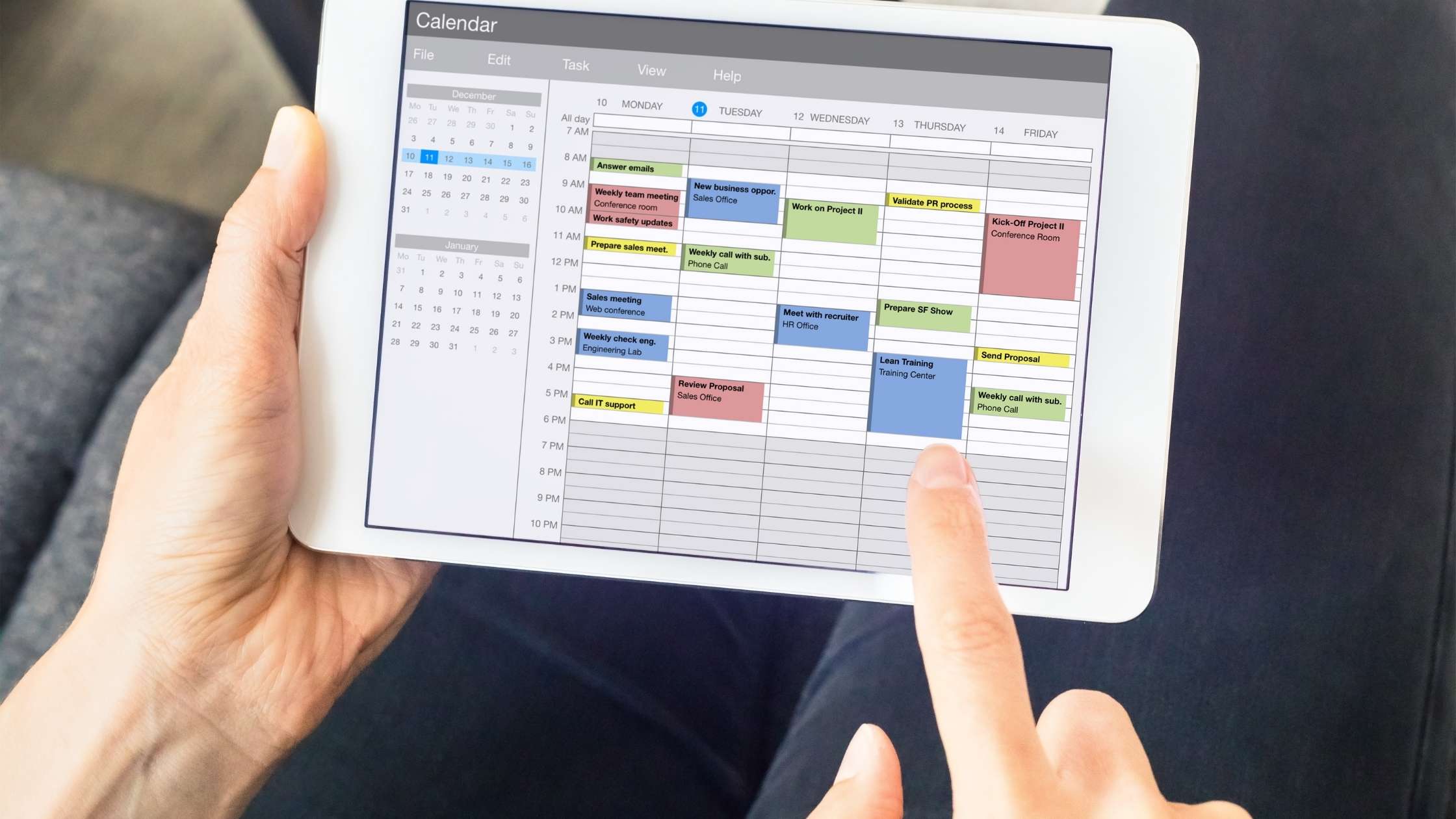Struggling with creating and managing an effective schedule while working remotely? Wondering where to start with effective scheduling?
Here we cover the most popular schedule strategies for remote workers. We’ll explain how to use and combine them right to make the most of your work day.
A schedule has become a very controversial word these days -Freedom vs. duty, creativity vs. formality, action vs. procrastination.
Interestingly, for most, scheduling is not on the first side of the spectrum in these examples.
But is it really so? Does having a rigorous agenda make your schedule dull and predicted?
Well, it all depends on your schedule-planning approach. We won’t have more time on our daily schedules, but we truly can make the most of them. If you believe that spending half an hour with a pen and a notepad planning your daily schedule is just a waste, you really should reconsider.
7 effective scheduling strategies to exercise
Wanna know how to make a schedule that will boost your work from home productivity without ruining any fun? Read on!
1. Schedule your sleep
We can ramble on how our day starts and how it is important to prepare a schedule beforehand. You’ve made an attempt to schedule the next day, and look how inspired you are!
You can try to do as much as you can the previous night: get your clothes ready, put all the stuff needed in your bag, etc. It takes hours and hours, but you just can’t stop. And you end up going to bed after midnight anticipating how much you’ll achieve tomorrow. Sounds familiar?
The point is that when it happens regularly, it won’t be possible for you to achieve much if you don’t let your body rest for at least eight hours. This must be your effective scheduling task #1.
People say they can sleep for five hours and still be active the next day. But numerous researches have shown that they won’t be nearly as productive as they could be if they hadn’t deprived themselves of sleep.
So, you can schedule whatever you want, but if you feel broken and exhausted because you haven’t slept for the right amount of hours, your next day’s schedule will hardly go as planned.
2. MIT: The most important task goes first in your schedule

Drawing a line between efficiency and effectiveness can sometimes be essential for your work. What you need depends on the essence of your work and daily schedules. Sometimes, quick box-checking is the right thing to do. In other words, the more you do and the faster you do it, the more efficient you are.
Prioritizing, on the other hand, is the key to an effective schedule. Several schedule methods deal with selecting and highlighting the most important tasks in your day. For example, Ivy Lee’s schedule method offers to choose six of them, put them in the order of importance, and take them one by one.
We would recommend the MIT schedule method. The second slot on your schedule template should be devoted to the most important thing of your day. Why the second one? Because the first thing to schedule into an open slot is morning routines. But we will return to them later.
The advantages of the MIT schedule method are as follows:
- This scheduling method has been proven that people are at the top of their productivity during the first two hours since they wake up. Do you want to waste this time on something that won’t make your daily schedule, like binge scrolling or checking email?
- We all need our endorphins and dopamine. The level of these ‘happy hormones’ increases each time we cross out anything from our to-do schedule. Can you imagine your level of happiness if you cross out something really important before it is even noon?
- Each day things can go wrong, making use deviate from a planned schedule. Still, it is quite unlikely that you will be totally distracted by any outer factors right in the morning. So, this important task will be done. And even if you won’t accomplish anything else, this day will make some difference.
- It will be much easier to focus in the morning than at any other time during your day. This will save you a lot of negative emotions.
The vital aspect of implementing this scheduling method is to choose wisely. Is this task really meaningful to YOU? It can be anything from a workout to a project deadline. Think of your bigger goal on your overall schedule and try to figure out which step will bring you a sense of accomplishment.
Another interesting technique is the 1-3-5 rule. You just need to commit to accomplishing 1 Major Task, 3 Medium Tasks, and 5 Small Tasks. This strategy ensures that you’re making progress.
3. Make your calendar your best friend by using colored blocks
The major mistake people make when they work with their calendar is approaching it as a to-do list. A list of tasks reflects what should be completed. Your calendar, in turn, shows how your schedule has to go. A perfect tool to make your calendar work for you is blocking. It lets you perceive your time and overall schedule visually.
Look at each hour of your day. What schedule blocks should be dedicated to certain tasks and activities? Block time for your creative work, day job, workouts, meals, family time — literally everything you have on the schedule. Create blocks on your calendar and use some color coding. It can be done on paper or your devices with the help of some apps like Google Calendar.
4. Batch tasks together
With calendar blocking, it is very convenient to batch your time. It means to group similar tasks together. You can also group activities by the place where you do it.
Let’s say you stay at home all morning. Here, there can be several focus group schedule batches: laptop, laundry, cooking, kids, etc. All the tasks under each of these labels have to be batched together.
This will allow you to stay focused without making any unnecessary moves. Every distraction will push you out from a planned schedule for 10 to 20 minutes. This is the approximate time it takes to focus after you’ve shifted from one thing to another.
Remember that all scheduled tasks should also be grouped depending on whether they are shallow or deep. No deep creative work can be put together with washing your dishes or answering your emails.
Pro Tip: Creating a time blocked schedule often comes hand in hand with procrastination for those who haven’t mastered this skill yet. People don’t know where to start or can’t honestly say how much time this or that thing will take. Plus, they try to think of an ideal schedule that includes everything they WANT to do, instead of a realistic one.
If this is your case, start with blocking things you already do.
Got up at six and wandered around your house for an hour trying to get awake? Make it a slot.
Did it take you two hours to get to work? Write it down.
These things most definitely will stay with you for a while. But when you proceed with blocking your schedule ahead, you’ll have a real picture. It will then be easier to find a place for important things on your schedule, and you won’t overestimate your time capacity.
5. Schedule time for some fun

Break schedule blocking is a must. Do you think you can’t forget to take a break? It may be true. But if you don’t block your leisure time on your calendar, you can get too absorbed in a challenging schedule. And it will be impossible to come back to a productive stage.
Need your morning coffee (or herbal tea)? It mustn’t be done in a rush. Set a coffee schedule slot. Need time to spend time with your family? This has to be on your calendar. Need to procrastinate for a while? Yes, you heard that right. Most people do. You can’t always be 100% productive, as it will only cause mental and physical breakdowns. Employ procrastination moments. Make them a part of your day. If you know them, you can control them. Make a schedule with an hour to visit Hugo Spiel in it. Warcraft? Roblox? Solitaire? Well, ANYTHING you want. Call it a Computer Game Recharge. Feel it, enjoy it. And then, go back to your work with a Game box checked out of your schedule.
Even at work, there is no need to be super involved in your actual duties all the time. Organize or at least don’t decline a chance to participate in numerous remote team activities that can boost the whole staff’s productivity. It distracts us from problems, avoids burnout on the one hand. But on the other, it opens new perspectives of your working process and lets us see new opportunities.
6. Use your routines as the basis of a productive day
The least disputable schedule technique is routines. Everyone talks about them, and everyone has them. The question is how helpful they are to make one’s schedule go smoothly when you are working remotely. Binge-watching Netflix and savoring chips every night after work is a kind of a routine, too. But this is not the kind we want.
Effective daily routines are repetitive actions that:
- become an indelible part of your life
- are based on your daily habits
- are done intuitively without taking too much energy to start
- make more space on your schedule for work, family time, and whatever else you truly want to do.
The most valuable routines are the ones you have in the morning and in the evening. We’ve said that we are highly productive in the morning. At the same time, we can get distracted easily. And this is very dangerous because it threatens the whole day. A proper routine will help you avoid that. It can include a little time for creativity, taking care of yourself and your home, etc.
Evening routines should represent a gradation from an active day to a relaxed bedtime. Start with preparing everything you need for the next day and end it by giving gratitude and reading.
Pro Tip: Both morning and evening routines mustn’t include using your PHONE. At the beginning of the day, emails, feeds, and videos make you submerge in the lives and needs of other people. Think of yourself first thing in the morning, and it’ll give you more commitment and energy to stick to schedule. In the evening, give your eyes and brain the rest they deserve and avoid blue light whatsoever. Otherwise, it will be harder to go asleep.
7. Have to work on your schedule? Set a timer!
Now, you’ve blocked time for your sleep, routines, leisure, and work. And when it’s time to work, strange things start to happen. We feel overwhelmed with everything that is upon us. It leads to panic and, again, procrastinating.
A work schedule session has to be organized. Here, you can use an MIT schedule method once again and tackle the principal task first. But don’t force it. A perfect way not to burn out before you complete anything on your schedule is the Pomodoro technique. A classic version includes two 25-minute working sessions with a 5-minute break. Then, there is a long break for 15-30 minutes. After that, you just repeat it all once more.
Pro Tip: Stick to the timer. Seriously, or there will be no point in it.
Another Pro Tip: Use meditative music to focus during the working or sessions and turn it off during the breaks. This will create the necessary atmosphere to differentiate between the two. You may use special YouTube Pomodoro music videos with a timer for this purpose. But don’t try to watch some blogs and shows or play computer games when you have a Pomodoro break. You will not go back to an effective schedule if you do.
Conclusion
There is a strong misconception that a day job will give you a schedule anyway. Indeed, you know when to get up not to get late. Then you’re at work, then you watch TV and go to sleep. But many generations of professionals have proven that such views are misleading and fairly dangerous.
A schedule is a well-thought plan for a day one has before them. Everyone who strives for a full and healthy lifestyle should give it some effort. Consider the effective scheduling strategies we’ve outlined to fill your day with tasks that’ll bring you to success.
About the author

Thomas Glare is a software developer. He has come up with the list of the top ten ideal appointment scheduling tools that are most beneficial to startups businesses, such as Mr bet. Many of them he used himself in the day-to-day projects.


